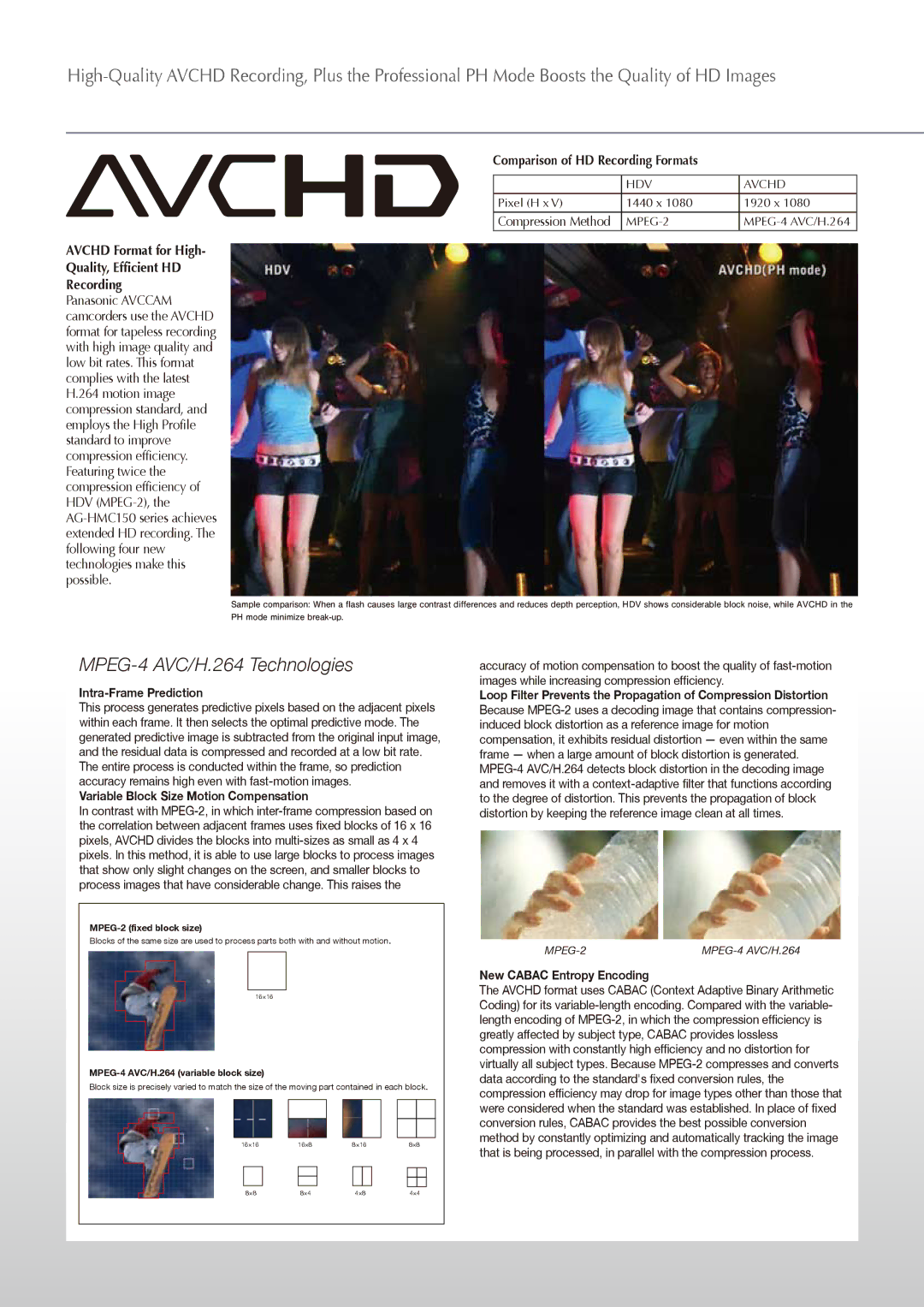
AVCHD Format for High- Quality, Efficient HD Recording
Panasonic AVCCAM camcorders use the AVCHD format for tapeless recording with high image quality and low bit rates. This format complies with the latest H.264 motion image compression standard, and employs the High Profile standard to improve compression efficiency. Featuring twice the compression efficiency of HDV
Comparison of HD Recording Formats
| HDV | AVCHD |
Pixel (H x V) | 1440 x 1080 | 1920 x 1080 |
Compression Method |
|
|
Sample comparison: When a flash causes large contrast differences and reduces depth perception, HDV shows considerable block noise, while AVCHD in the PH mode minimize
MPEG-4 AVC/H.264 Technologies
Intra-Frame Prediction
This process generates predictive pixels based on the adjacent pixels within each frame. It then selects the optimal predictive mode. The generated predictive image is subtracted from the original input image, and the residual data is compressed and recorded at a low bit rate. The entire process is conducted within the frame, so prediction accuracy remains high even with
Variable Block Size Motion Compensation
In contrast with
Blocks of the same size are used to process parts both with and without motion.
16×16
MPEG-4 AVC/H.264 (variable block size)
Block size is precisely varied to match the size of the moving part contained in each block.
16×16 | 16×8 | 8×16 | 8×8 | ||||||
|
|
|
|
|
|
|
|
|
|
|
|
|
|
|
|
|
|
|
|
|
|
|
|
|
|
|
|
|
|
8×8 | 8×4 | 4×8 | 4×4 | ||||||
accuracy of motion compensation to boost the quality of
Loop Filter Prevents the Propagation of Compression Distortion Because
New CABAC Entropy Encoding
The AVCHD format uses CABAC (Context Adaptive Binary Arithmetic Coding) for its
